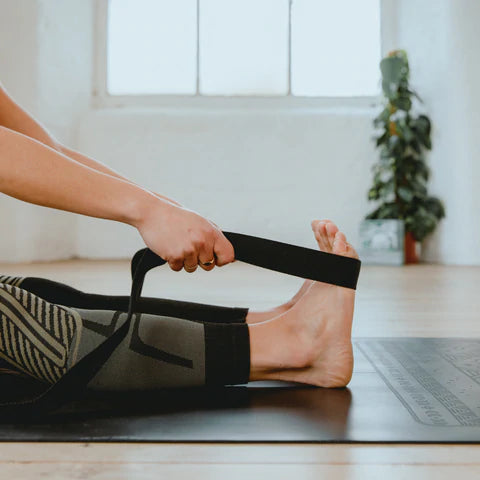What is Yoga?
Yoga is an ancient philosophy that incorporates the mind, body, and spirit. On the surface it looks like a series of balancing and stretching poses (asanas), but yoga comes with a measure of meditation and mindfulness thrown in too.
The great news is that you can practise yoga anywhere. Literally anywhere. At the local leisure centre, at home, in the garden, at a yoga retreat, on the beach or even in your hotel room. And apart from a little knowledge, you don’t need an awful lot to get started.

Benefits of Yoga
Yoga improves physical health on all levels, increasing core strength and endurance, as well as improving body composition, posture, and balance. It’s also a great way to work large groups of muscles simultaneously and because you’re forced to hold your own body weight in a position for longer than normal, core muscles are initiated and stabilised too.
Not to mention all the mental health benefits that yoga brings. For one thing, it helps you to become more aware of your breath and body, much like mindfulness and meditation. Focusing on holding a pose also means that you’re tuning everything else out including thoughts and distractions, so it’s calming, de-stressing and relaxing all at the same time.
What Equipment Do You Need for Yoga?
Unlike some sports and exercise, you don’t need to lose an arm and a leg to get started. Wear comfortable, breathable clothing, choose somewhere that’s quiet and spacious and have a bottle of water to hand to keep hydrated.
The only other essential item is a non-slip yoga mat. Why do you need one? Well, they give you extra grip which supports your joints, supplies cushioning, stops you from sliding out of pose and reduces your risk of injury. For expert support, try the classic Yogi Bare Paws Natural Rubber Extreme Grip Yoga Mat available in black, green, grey, blue and red.
Beginners Yoga
It’s a great idea to join a local class when you’re starting out on your yoga journey. That way, you can get face-to-face guidance from an instructor, which is especially important if you have any injuries or want to try more challenging poses. As you become more confident and experienced, you may feel ready to go it alone. Be sure to have a portable yoga mat, like the Yogi Bare Teddy Mat, which can be folded up ready for the yoga studio or so that you can safely keep up a regular routine wherever you are in the world.

Yoga Routine for Home
Ready for some yoga in your life? Be sure to incorporate some of these classic asanas into your at home yoga beginner’s routine.
Tadasana (Mountain Pose)
Stand at the front of your mat with base of big toes touching. Keep your arms down by your side. Lift and spread your toes and balls of feet. You can gently rock side to side and back and forth until you feel that your weight is balanced evenly on both feet. Draw pelvic floor muscles together and the abdomen slightly in and up. Open your chest.
Roll your shoulders open as you breathe in and keep palms turned outwards. Ears should be over the shoulders and crown of the head lifting as if by an invisible thread. Soften the face. Make sure that hips and feet are anchored to the floor.
Bhujangasana (Cobra)
Lie face down and centred on your mat. Press into the floor with both hands. Inhale. Now bring your head and chest up, reaching forwards, but with shoulders pulled slightly back. You should feel a slight backbend with this one.
Bottom and knees should be flat along the floor. Elbows move backwards, pointing towards the hips which should feel anchored to the floor as well as the feet.
Adho Mukha Svanasana (Downward Facing Dog)
This is a standing pose that incorporates a mild inversion to stretch the body. From table position, feet should be hip width apart, tuck your toes under, exhale, press into hands, keeping arm straight (but not locked) and lift hips up and back, towards the ceiling.
Your back and legs will invert to create a triangle shape. Your legs should be straight or with a slight bend if it’s more comfortable. Head and neck can hang free or look towards your belly button.
Virabhadrasana (Warrior I)
Lift your right leg forwards, bending into the right thigh. Left foot should be rooted to the spot, heel on the floor but turned at a 45° angle. Arms reach up overhead, fingertips point towards the sky and draw the stomach in. You should feel strong!
Balasana (Child’s Pose)
Kneeling on the floor, bring yourself into child’s pose by touching your big toes together and sitting on your heels. On your next breath, bend forwards so that your torso is between your thighs. Head should be face down, with chin touching the floor, whilst arms reach forward, fingers touching floor.
If you liked this article, we think you’ll love 5 Yoga Terms to Know Before Your First Class.

Leave a comment